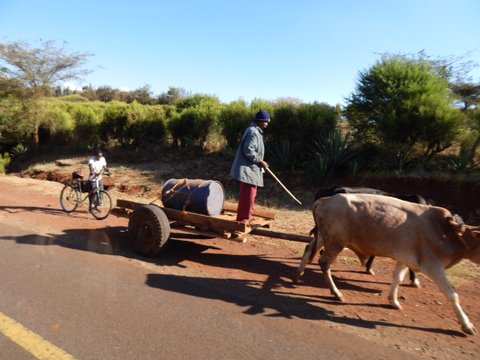Nothing grabs our attention like big headlines. During the eras of radio and television, they provided the sound bites we used to sort big events. We all remember some of the more famous ones, like “Man Walks on Moon” (New York Times, July 21, 19, 1969), “Japan Surrenders, End of War” (New York Times, August 15, 1945), or “Shuttle Explodes!” (New York Times January 28, 1986). And who can forget “Dewey Defeats Truman” (Chicago Tribune, November 3, 1948), and “Passengers Safely Moved and Steamer Taken in Tow” (Christian Science Monitor, April 15, 1912)?
We still count on headlines to see not only whether to buy the paper, but also which stories we pay attention to. When we see headlines that say, “800,000 Americans tell Senate to Stop Pipeline,” or “Tar Sands and the Pipeline,” we take notice. We want to know why .26 percent of the population is openly against something.
What are “tar sands”? And what do we even mean by “the pipeline”? Here’s my stab at it:

The Keystone XL pipeline is a system of pipelines that will transport crude oil from Athabasca Oil Sands in Alberta, Canada through the United States to refiners and transportation hubs in Illinois, Oklahoma, and the Gulf of Mexico. That’s over 2,000 miles of pipelines. The Athabasca oil sands, or tar sands, is an oil-rich area of boreal forest and peat bogs. The tar sand may hold around 133,000 million barrels of oil (133,000,000,000 barrels of bitumen crude.)
Bitumen is a sticky, black semisolid also know as asphalt. Bitumen is usually mined from the surface. Then it is broken up, heated with water, and filtered down to just the crude oil. Techniques like steam-assisted gravity drainage can do away with the surface mining and make the bitumen flow like traditional crude. Bitumen-based fuel does contain more greenhouse gasses than conventional crude based fuels; it may contain at least 5 percent more carbon dioxide.
Currently Canada is our largest supplier of foreign crude. They supply us with 2 million barrels of oil per day out of the 19 million we use each day. Once the Keystone XL is finished, Canada would be able to deliver .5 million more barrels a day. That would be 500,000 that the United States would not have to buy from overseas.
The construction of a new pipeline system that large would provide a lot of temporary construction jobs, however no one is sure about the number. Some groups predict 20,000 direct jobs and another 100,000 ancillary ones while others predict only 6,000 jobs. Which one is correct? If you build it, they will come. That may be the only way to figure out how many jobs it will create.
Every time a new pipeline system is proposed for construction, controversy breaks out. People are worried about how it could effect the environment. A large pipeline system that will run across a state, states, or even countries has the potential to alter a large environmental area. It is important to minimize the effect on the environment. In addition to the usual concerns, the Keystone XL is proposed to go across the Ogallala Aquifer, which supplies most of the water for the Midwestern states. If there were a spill, it could contaminate the water source of 4 million people. One of the reasons the pipeline was rejected in January of 2012 was to allow a more complete study of its potential impact and to discuss alternative routes.
Regardless of what the United States decides to do, Canada will develop their natural resource. The United States is not the only nation eager to bring in more oil. China has a huge growth demand for their economy and industry. From 2006 to 2010, China tripled the number of cars inside its borders, and the number will continue to grow. If we don’t buy the crude, China will. Because China and Canada are not physically connected, the trade will have to rely on tankers, so not only will China be using an oil that produces more carbon dioxide, they will have to produce more C02 to get the oil to where it can be used.
With all that, will the pipeline be developed? President Obama did address the pipeline in his June energy speech. The President has said he would only approve the pipeline “if this project does not significantly exacerbate the problem of carbon pollution.” How much carbon does it take to exacerbate the environment? The groups that decry the pipeline say that any carbon added to the atmosphere during construction would be too much and groups that support the pipeline say any amount of carbon would be offset by the amount of jobs and energy security it would bring.
What sort of carbon credits could be used by the different construction companies? We’ll have to wait to see what actual guidelines developed. What do you think?


